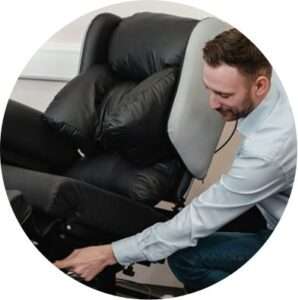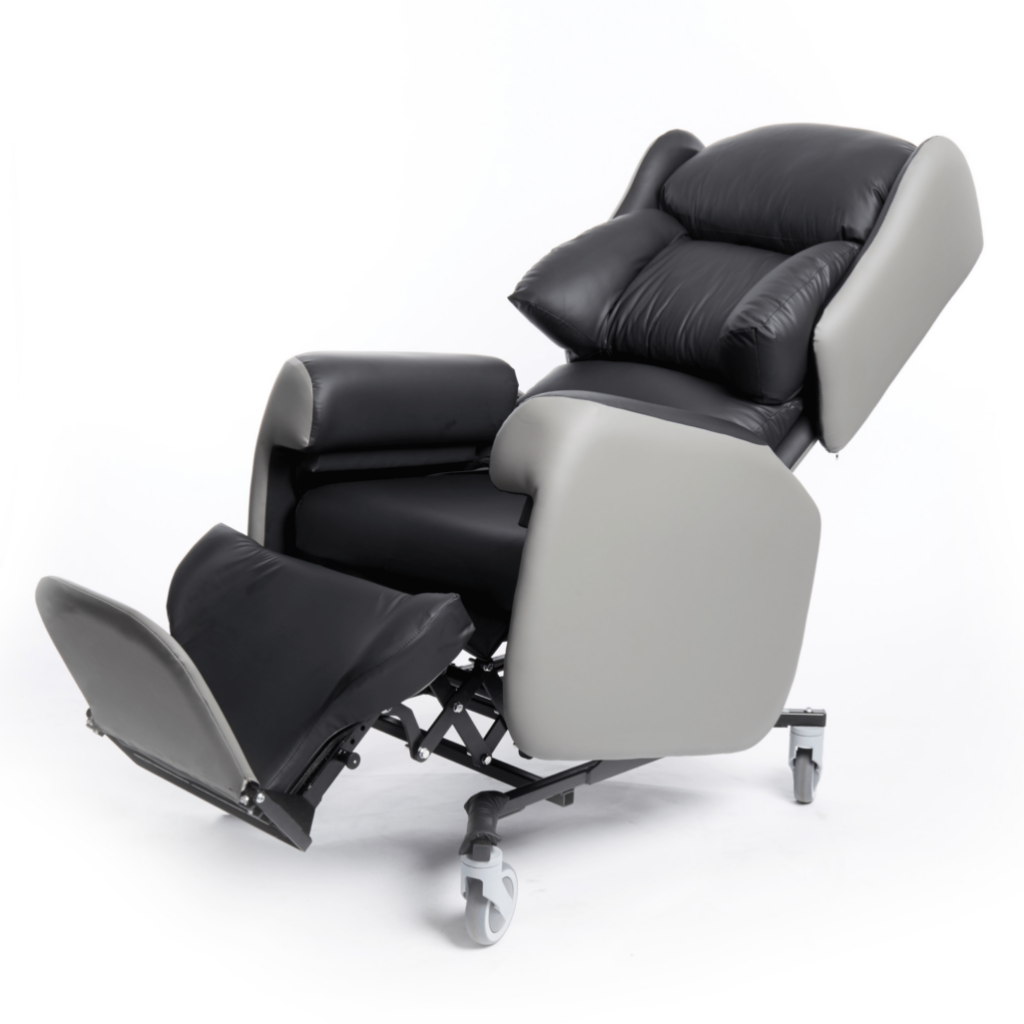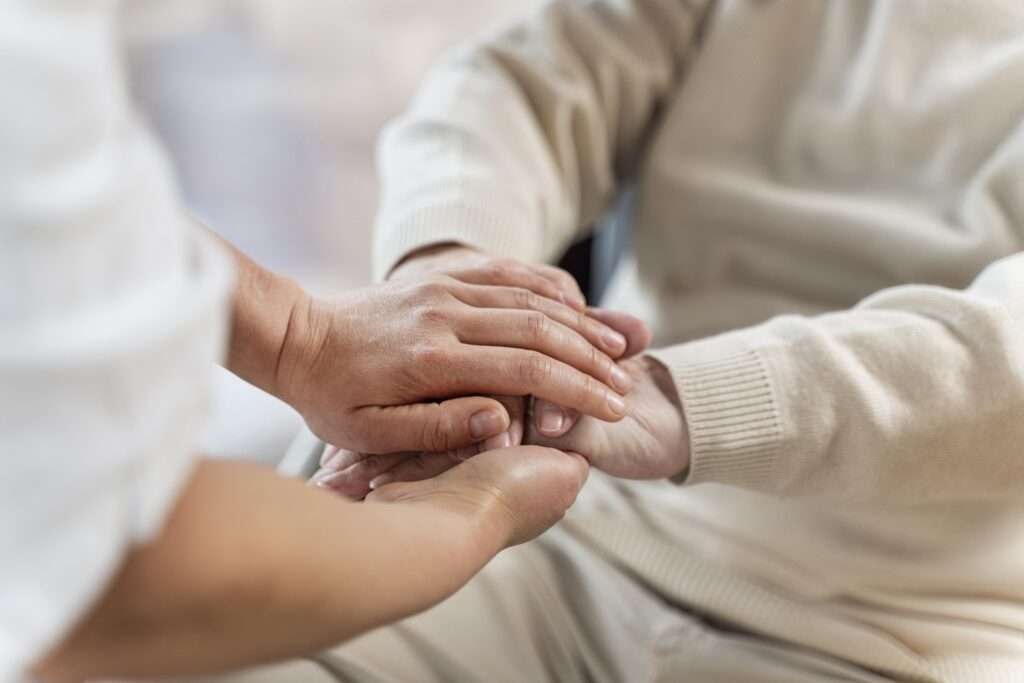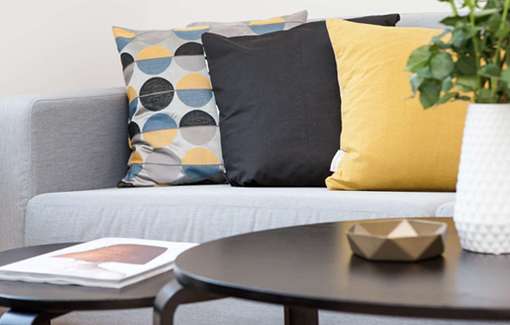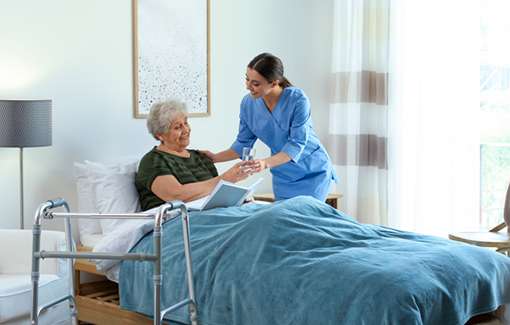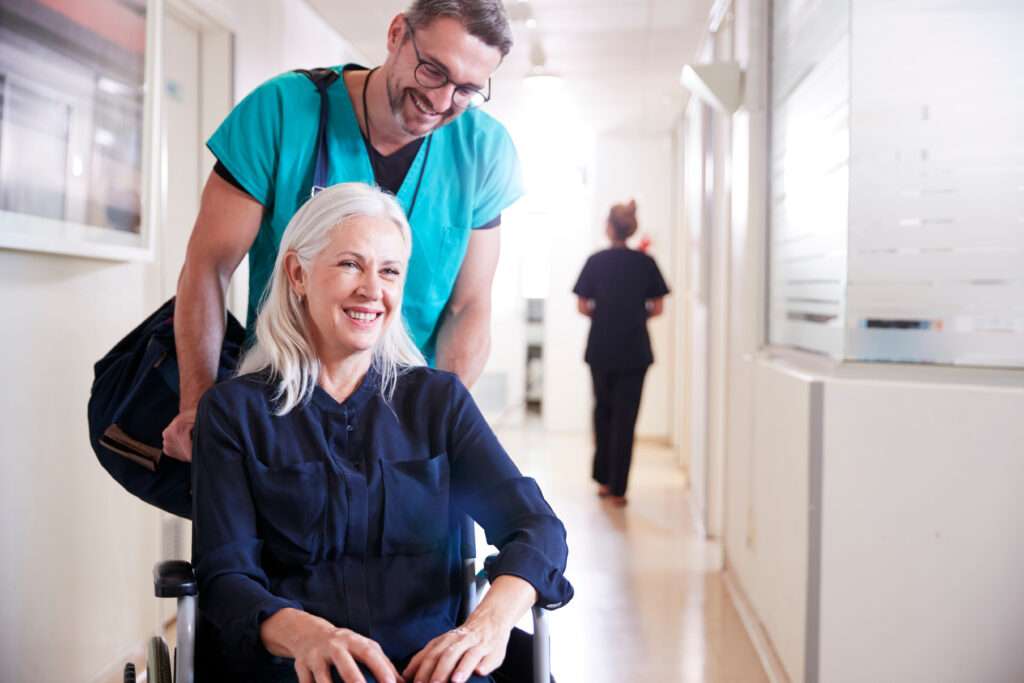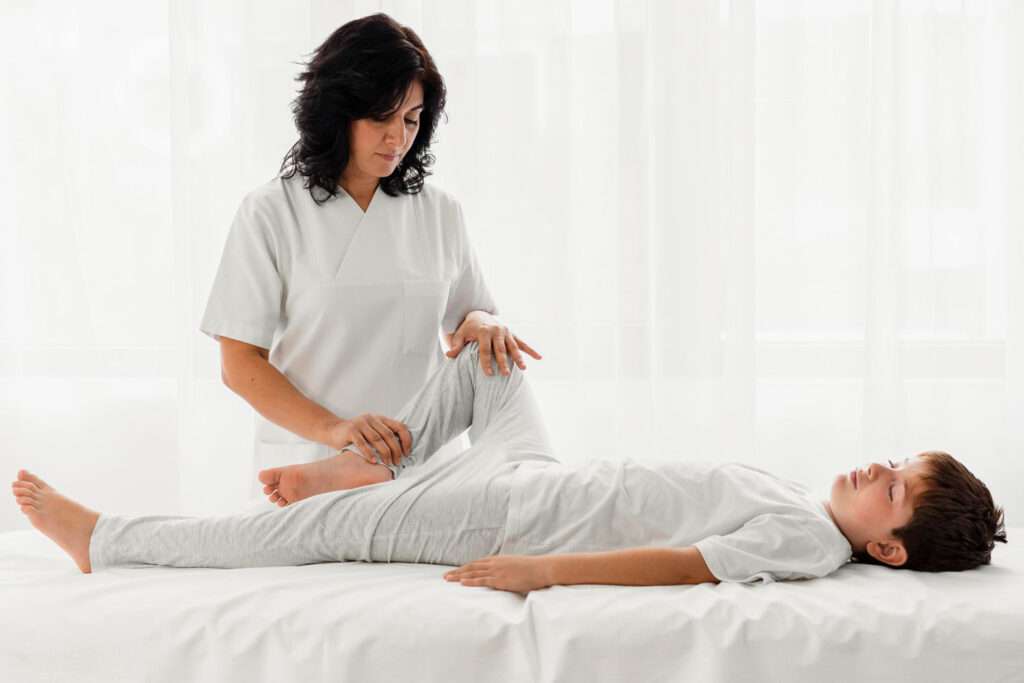Drop Foot is a common condition following a stroke, and can be a symptom of MS. It results from being unable to lift the foot up properly when walking, leading to slowness in gait and an increased risk of falling.
Also known as ‘dropped foot’ or ‘foot drop’, it happens when the muscles are not strong enough to lift the foot, or the foot lift is restricted by tight muscles or spasticity.
While this is primarily a walking and mobility issue, it does overlap with specialist seating, as we will explore further in this article.
Jump straight to…
Why Good Foot Support Matters in Seating
Seating, especially adapted seating for those with complex care needs, has to take into account how the feet are supported.
Surprisingly, 19% of body weight goes through the feet when we are sitting, so poor support in this area can lead to extra pressure on the buttocks and thighs, discomfort in the lower limbs from the feet ‘hanging’, and loss of postural stability.
Care chairs typically have a footplate for the feet to rest on, so that the full posture is supported from the head, down through the trunk and legs all the way to the feet.

Treatment for Drop Foot
FES (Functional Electrical Stimulation) uses small electrical impulses to stimulate the nerves in the leg, which lifts the foot and helps improve walking ability.
How it Works
The muscles contract from the electrical stimulus which lifts the foot up. The device is operated by an automatic switch, either in the user’s shoe or mounted on a leg cuff.
An FES specialist can assess if this treatment is suitable for the client’s needs.
How Seating Can Help With Drop Foot
Seating can’t treat the underlying neurological cause of drop foot, but can assist in the management of this condition in a variety of ways.
Foot Support
If the foot isn’t properly supported at the right angle, it will tend to point downwards for someone with drop foot, creating a movement called ‘plantar flexion’. This foot position can cause pressure to build up in the toes and ball of the foot, and can lead to contractures.
Seating Intervention
A care chair that is properly set up can:
- Position the foot at the correct height and angle, preventing plantar or dorsal flexion. Height and angle adjustment in the footplate comes as standard with the Lento Care Chair.
- Support the ankle in the right position with ankle huggers and padded straps, preventing the feet from falling to one side
- Prevent the foot hanging or being unsupported, with an adjustable legrest
- Bring the angle of the foot up using tilt-in-space, which reduces the effect of gravity pulling downwards and makes it easier to hold the feet at a 90-degree angle.
Postural Stability
When the feet lose contact with the footplate, this can cause postural instability.
Seating Intervention
- Our removeable padded footplate covers on the Lento Care Chair bring increased comfort and stability for people with drop foot.

Standing and Transferring
Foot drop can also affect placement of the foot when standing, making it more difficult to transfer from a chair to other devices.
Seating Intervention
Ways to make transfers from chairs to other devices easier include:
- Non-slip footplates
- Full compatibility with standaids like the Sara Stedy, so the footrest can be flipped back and the standing pad on the Sara Stedy positioned right up against the front of the chair.

Preventing Other Complications
The reduced movement in the lower limbs from drop foot may lead to swelling and oedema, shown by redness of skin and the build-up of fluid.
Seating Intervention
Seating can help prevent these other complications by providing:
- Leg elevation with the articulating legrest, improving circulation and reducing swelling
- Proper ankle alignment with the use of foot blockers and leg laterals to prevent the pooling of fluid
Conclusion
Drop foot is a condition that primarily affects walking, but its impact extends beyond just mobility. When seating is not optimised for someone with drop foot, the feet can fall into poor positions that compromise posture, increase pressure, and hinder transfers.
Specialist seating plays an essential role in maintaining proper foot alignment, maximising comfort, and preventing secondary complications such as swelling, contractures, and instability.
Frequently Asked Questions (FAQs)
Q: Can specialist seating cure drop foot?
A: No, specialist seating cannot treat the neurological cause of drop foot, but it can significantly improve comfort, posture, and functional ability by supporting the foot in the correct position.
Q: Why is foot position so important when sitting?
A: Around 19% of body weight goes through the feet when sitting. Poor foot support can increase pressure on the thighs and buttocks, contribute to pain, and reduce postural stability, especially in people with drop foot.
Q: What features should I look for in a chair for someone with drop foot?
A: Helpful features include adjustable footplates, tilt-in-space, ankle huggers, supportive legrests, non-slip footplates, and compatibility with transfer aids like the Sara Stedy
Q: Does tilt-in-space help with drop foot?
A: Yes, tilt-in-space changes the angle of the body relative to gravity, making it easier to maintain a neutral 90-degree foot position and reducing the tendency of the foot to plantar flex.
Q: How can seating help prevent swelling or oedema?
A: A chair with articulating legrests allows the legs to be elevated, which promotes circulation and reduces fluid build-up. Proper ankle alignment also helps prevent pooling of fluid in the feet and lower limbs.
Q: Who can assess whether FES is appropriate?
A: A specialist trained in Functional Electrical Stimulation can assess suitability. They will evaluate muscle function, gait pattern, and overall mobility needs.



